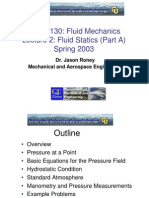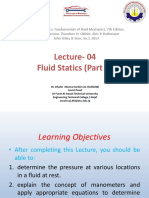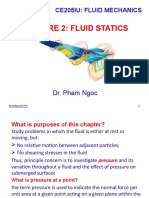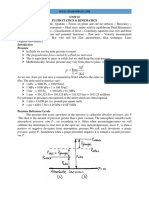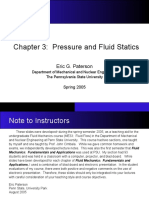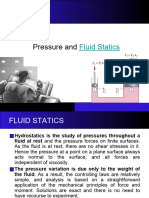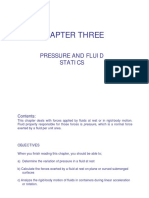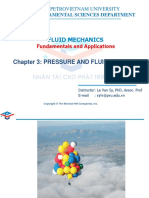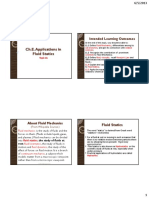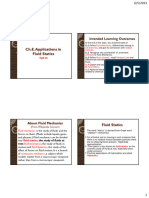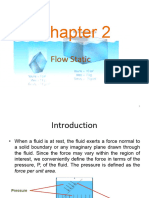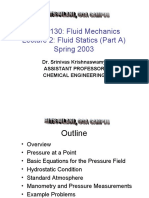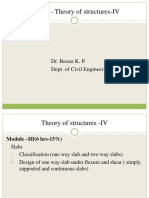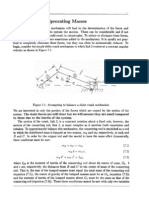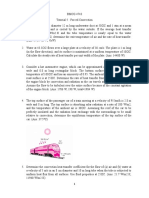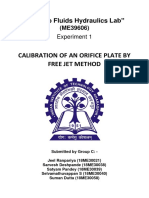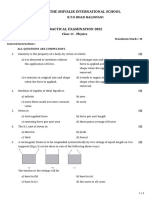0% found this document useful (0 votes)
13 views4 pagesNotes
The document discusses fluid statics, focusing on key concepts such as pressure in static fluids, Pascal's principle, and Archimedes' principle. It explains how pressure varies with depth in a fluid and introduces applications like hydraulic lifts and manometers for measuring pressure. The document emphasizes the importance of understanding buoyancy and the forces acting on objects submerged in fluids.
Uploaded by
jackkingsman19Copyright
© © All Rights Reserved
We take content rights seriously. If you suspect this is your content, claim it here.
Available Formats
Download as PDF, TXT or read online on Scribd
0% found this document useful (0 votes)
13 views4 pagesNotes
The document discusses fluid statics, focusing on key concepts such as pressure in static fluids, Pascal's principle, and Archimedes' principle. It explains how pressure varies with depth in a fluid and introduces applications like hydraulic lifts and manometers for measuring pressure. The document emphasizes the importance of understanding buoyancy and the forces acting on objects submerged in fluids.
Uploaded by
jackkingsman19Copyright
© © All Rights Reserved
We take content rights seriously. If you suspect this is your content, claim it here.
Available Formats
Download as PDF, TXT or read online on Scribd
/ 4


